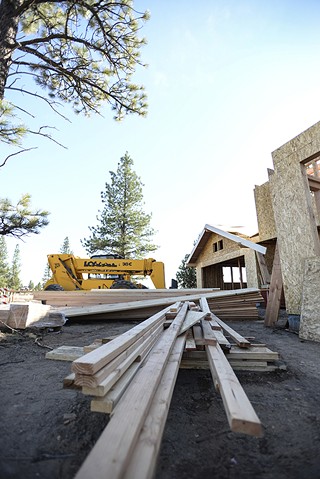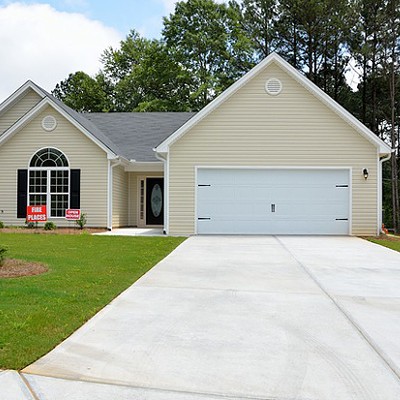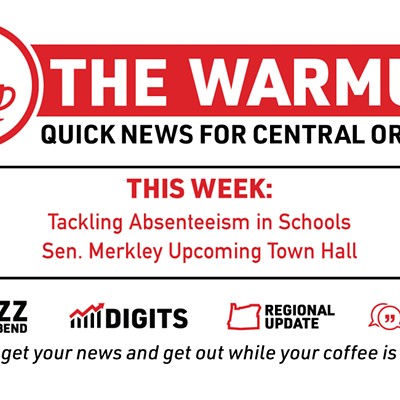And some city leaders believe that loosening up the Urban Growth Boundary could provide some relief from that chokehold. It is a basic theory that makes sense: Opening up more land for development will provide more housing which, in turn, will drive down property prices.
But is the answer so simple?
"In a holistic view," explains Jim Long, affordable housing manager for the City of Bend, "anytime you free up more land you're going to hopefully drop the prices down and that should make it affordable to do more affordable housing." But, he warns, "It's not a cure-all."
A lesson in supply and demand
The city's Urban Growth Boundary hasn't changed since before 2004, although the population has grown at a steady average rate of 1 percent each year. When the City last submitted its UGB proposal to the State in 2009, it was sent back for revision in large part because it failed to sufficiently address the efficiency with which the existing land supply is used. It's sort of like parents telling their kids they can't have more food until they clear their plate.
Over the past year, as housing prices have steadily climbed and availability continues to decline, the City has been busy working out scenarios that will increase the number of available housing units. The overarching question: What role the UGB will play? And will change come soon enough?
Some of the recent changes put forth by the Affordable Housing Advisory Committee, on which Long sits, help the City meet the requirement to more efficiently use the existing land within the UGB. Ultimately, density bonuses and code changes that facilitate the development of accessory dwelling units and cottage-style communities are aimed at diversifying the local housing stock and, hopefully, freeing up more low-cost housing options.
But creating more efficiencies within the current boundaries, or expanding the UGB, are not the only considerations.
"There are many factors affecting the price of housing," explains Brian Rankin, the City planner leading the UGB process. "The UGB expansion does not address all the complex factors which [affect] the price of housing, but does impact some of these variables. The UGB expansion project will create new housing policies, supplies of land in the expansion area, changes to zoning on land inside the current UGB, and new development codes."
Location, location, location
The City is currently considering three different expansion scenarios, with the growth occurring in different configurations.
"I think the location of the expansion likely has less to do with the price of future housing than the type—and pricing—of development which is mostly determined by private developers," Rankin explains. "Part of our analysis of the expansion areas will try to assess how the location of the expansion may affect housing affordability."
While the regulatory framework created by the City will require a greater diversity of housing types, there's no guarantee that annexed land will be used for housing that is accessible for people at or below the median wage. And while City staff would like to see affordable housing near amenities, the more an area has going for it, the higher a price it's likely to fetch.
"Expansion into lower cost areas will make it easier to build affordable housing," explains Housing Works Executive Director Tom Kemper. "It is complicated because you have to take into account availability of transportation, utilities, sewer, etc. in that determination. For example, the availability of nearby sewer will make development much more cost effective than sites without access to sewer." But, Kemper says, "expansion of sewer is expensive."
Bottom line: There is no obvious win-win location where UGB expansion can happen, and, in the process, create affordable housing.
Timing is everything
Though Rep. Knute Buehler introduced legislation aimed at making the UGB process more efficient and less time-consuming, it will still take years for the expansion to go into effect and its impact to be felt. That long timeline begs the question: Is it too late for the UGB to do anything for affordable housing?
"The UGB project is not a silver bullet and will not immediately reduce housing prices; rather, it is one of many things that can and should be done to provide more affordable housing options," City planner Rankin says. "It is interesting to me that the market is responding to the need for more multi-family units as we speak without the UGB expansion. More multi-family units have received planning approvals in the last year or so than previous five to ten years, which suggests the city hasn't reached a point of no return."
Still, it's too early for self-congratulatory pats on the back. Housing Works' Kemper says that while there about 1,500 multifamily units in various stages of development in Bend, that doesn't mean 1,500 low-income families will have housing options.
"Hopefully more than half will get built which will relieve some of the pressure. The problem is that they are priced with high rents, which will not create affordable housing. It is all relative," Kemper says. "The point of no return? No. A major problem impacting Bend in significant ways? Yes. We are probably three years away from an UGB expansion. That assumes no appeals of the decision. The real implementation of the expansion is probably five years away. It feels like it will get worse before it gets better."
But even if present prospects are grim, local affordable housing experts says things seem to be trending up overall.
"I think we're going to start seeing [an increase in affordable housing] sooner than you think. We've got people knocking on the door for the density bonus," Affordable Housing Manager Jim Long says. "As a very cynical person, I'm feeling slightly optimistic."



























